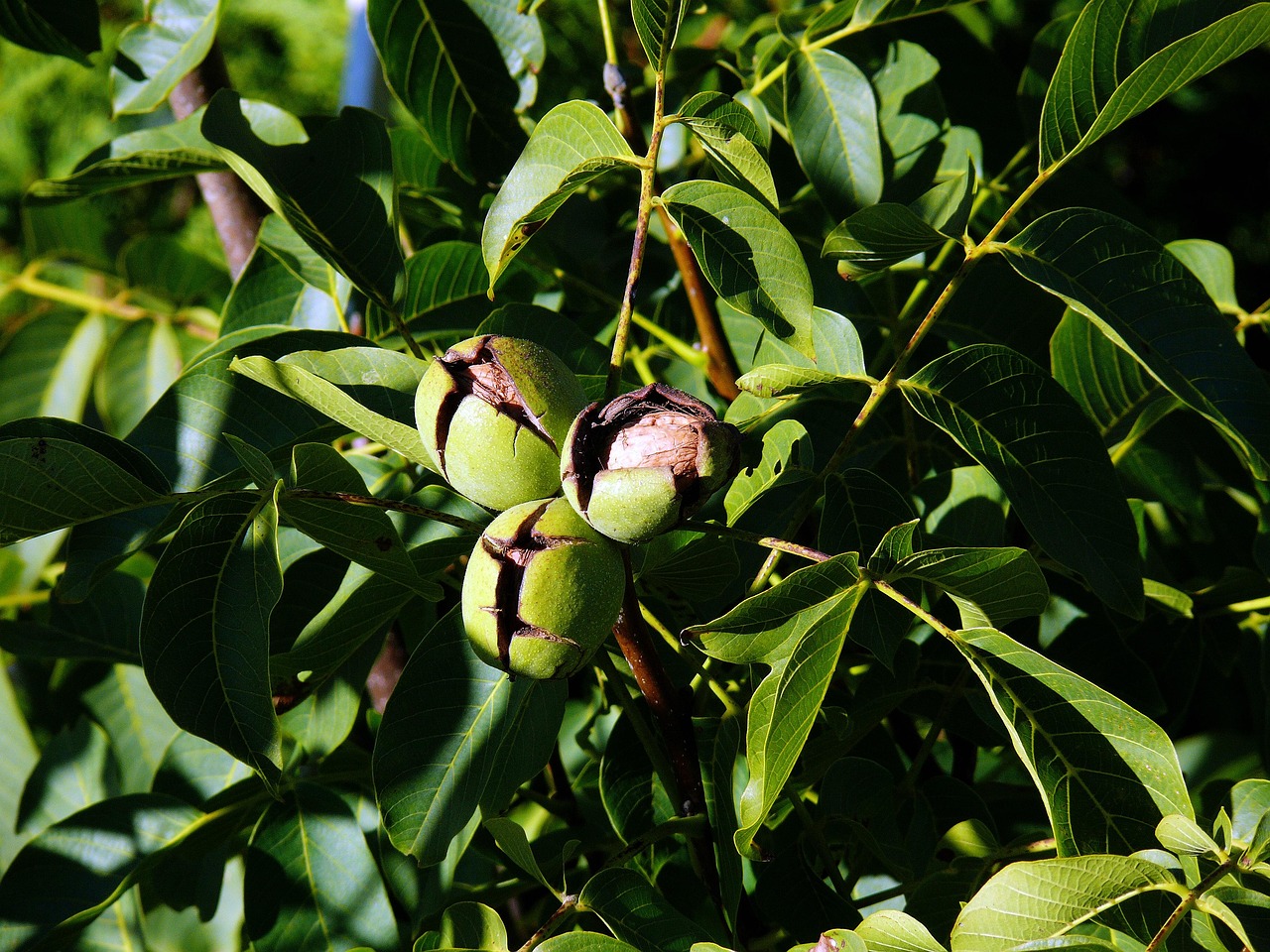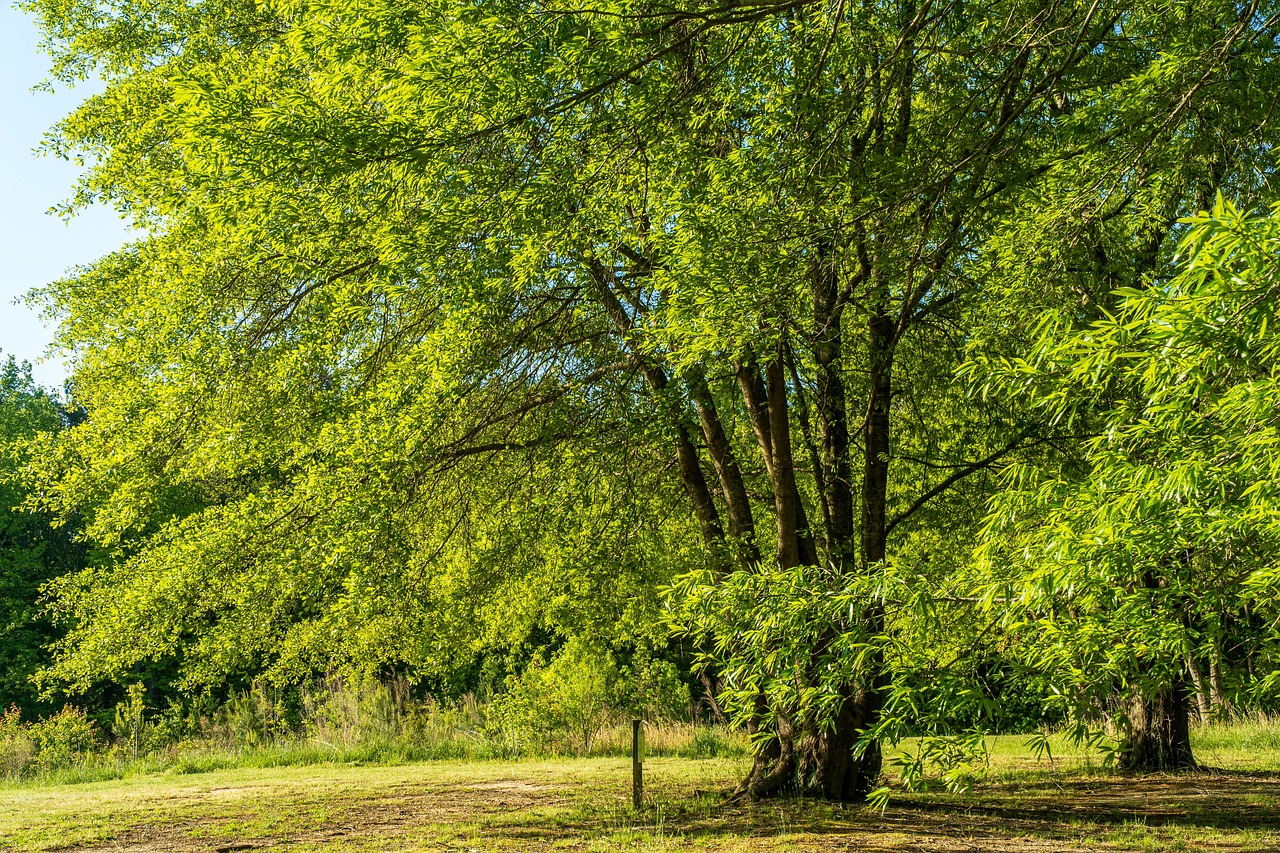Walnut trees typically exhibit a moderate growth rate, reaching heights of 50 to 75 feet and producing harvestable nuts within 5 to 7 years. For timber production, walnut trees can take 30 to 50 years to reach maturity, depending on the species and growing conditions.
Walnut trees are prized for their beautiful wood and nutritious nuts. They belong to the genus Juglans and are commonly found in various regions across the globe. The most well-known species for nut production include the English walnut (Juglans regia) and the black walnut (Juglans nigra). Both species offer unique benefits, making them popular among growers.

The growth rate of walnut trees is influenced by several factors, including soil quality, climate, and care practices. Understanding these factors helps growers maximize both timber and nut yields. In the right conditions, walnut trees can thrive and provide significant returns on investment.
Growth Characteristics of Walnut Trees
Walnut trees generally display a strong growth pattern, especially during their early years. The first few years are critical for establishing a robust root system. After this establishment phase, growth rates can vary based on environmental conditions.
Here are some key growth characteristics of walnut trees:

- Height: Walnut trees can grow between 50 to 75 feet tall.
- Diameter: Mature walnut trees can reach diameters of up to 3 feet.
- Canopy Spread: The canopy can spread up to 60 feet wide, providing ample shade.
The growth rate of walnut trees varies significantly between species. For instance, English walnuts tend to grow faster than black walnuts. Additionally, factors such as irrigation, fertilization, and pest management also play crucial roles in determining growth rates.
Factors Influencing Growth Rate
Several environmental and biological factors affect the growth rate of walnut trees. Understanding these elements can help growers optimize their cultivation practices for better yields.
Soil Quality
Soil plays a vital role in the growth rate of walnut trees. Well-drained soils rich in organic matter enhance growth. Sandy loam is often considered ideal for walnut cultivation. Poorly drained or compacted soils can hinder root development and limit nutrient uptake.

Climate Conditions
Walnut trees thrive in temperate climates with distinct seasons. They require adequate sunlight for optimal growth. Regions with warm summers and cold winters are ideal for walnut cultivation. Extreme temperatures, both hot and cold, can negatively impact tree health.
Irrigation Practices
Proper irrigation is crucial, especially during dry spells. While walnut trees are relatively drought-tolerant once established, they benefit from consistent moisture during the growing season. Overwatering can lead to root rot, which severely affects tree health and growth.
Pest and Disease Management
Like all crops, walnut trees are susceptible to various pests and diseases. Regular monitoring is essential for early detection and management. Common pests include the walnut husk fly and aphids. Effective pest management strategies can significantly enhance growth rates and yields.
Timber vs. Nut Yield
The purpose of planting walnut trees often determines the care and management practices employed. Growers focusing on timber production may adopt different strategies compared to those aiming for nut yield.

| Aspect | Timber Production | Nut Production |
|---|---|---|
| Maturity Time | 30-50 years | 5-7 years |
| Harvest Period | Once fully mature | Annually after 5-7 years |
| Management Focus | Tree health & growth rate | Pest control & nut quality |
The decision between timber and nut production often hinges on the grower’s goals and market demands. Understanding the differences in growth characteristics and management practices is essential for success in either endeavor.
Best Practices for Walnut Tree Cultivation
To achieve optimal growth rates and yields from walnut trees, it is essential to implement best practices in cultivation. These practices encompass soil management, pruning techniques, and pest control strategies. By following these guidelines, growers can ensure healthy tree development and maximize both timber and nut production.
Soil Management Techniques
Proper soil management is critical for walnut tree health. The following techniques can enhance soil quality and promote vigorous growth:
- Soil Testing: Conduct regular soil tests to determine nutrient levels and pH balance. This helps in making informed decisions regarding fertilization and amendments.
- Organic Matter Addition: Incorporate organic materials such as compost or well-rotted manure to improve soil structure and fertility.
- Mulching: Apply mulch around the base of the trees to retain moisture, suppress weeds, and regulate soil temperature.
- Crop Rotation: Practice crop rotation with legumes to enhance soil nitrogen levels and reduce pest populations.
Irrigation Practices
Irrigation is vital for the growth of walnut trees, especially during dry spells. Here are some recommended practices:
- Drip Irrigation: Use a drip irrigation system to deliver water directly to the root zone, minimizing water waste and preventing fungal diseases.
- Watering Schedule: Establish a watering schedule based on seasonal weather patterns and soil moisture levels.
- Drought Management: Implement drought management strategies, such as deep watering before dry periods, to help trees withstand water stress.
Pruning Techniques for Optimal Growth
Pruning is essential for promoting healthy growth in walnut trees. It helps maintain tree shape, enhances air circulation, and encourages sunlight penetration. The following pruning techniques are recommended:
Types of Pruning
- Structural Pruning: Conduct structural pruning during the first few years to establish a strong central leader and remove competing branches.
- Maintenance Pruning: Perform maintenance pruning annually to remove dead, diseased, or damaged branches, promoting overall tree health.
- Thinning: Thin out crowded branches to improve air circulation and reduce the risk of fungal infections.
Timing of Pruning
The timing of pruning is crucial for walnut trees. It is best to prune during the winter months when the trees are dormant. This minimizes stress on the tree and reduces the risk of disease transmission.
Pest and Disease Management Strategies
Pest and disease pressures can significantly impact walnut tree growth rates and yields. Implementing effective management strategies can mitigate these risks. Key approaches include:
Regular Monitoring
Regularly inspect walnut trees for signs of pests or diseases. Early detection is critical for effective management. Look for:
- Discoloration or wilting of leaves
- Visible insect infestations on foliage or branches
- Unusual growths or galls on the tree
Pest Control Methods
A range of pest control methods can be employed to protect walnut trees:
- Cultural Controls: Utilize cultural practices such as crop rotation, intercropping, and maintaining healthy trees through proper care.
- Biological Controls: Introduce natural predators, such as ladybugs, to help control aphid populations.
- Pesticides: Apply pesticides as a last resort, ensuring they are appropriate for the specific pest and safe for the environment.
Disease Management
Diseases such as walnut blight and root rot can affect tree health. To manage these diseases:
- Maintain Proper Drainage: Ensure good drainage in planting sites to prevent root rot.
- Cull Infected Plants: Remove any infected branches or trees promptly to prevent the spread of disease.
- Fungicide Application: Use fungicides judiciously based on disease identification and recommendations from agricultural extension services.
By integrating these best practices into their cultivation strategies, walnut growers can enhance growth rates while ensuring healthy trees that yield quality timber and nuts. Understanding the unique needs of walnut trees will result in more productive orchards and profitable operations.
Factors Affecting Walnut Tree Growth Rate
Understanding the various factors that impact the growth rate of walnut trees is essential for optimizing both timber and nut yields. These factors can be broadly categorized into environmental conditions, biological aspects, and management practices. Each plays a crucial role in determining how well walnut trees will grow and produce.
Environmental Conditions
Environmental conditions significantly influence walnut tree growth. Key elements include:
- Climate: Walnut trees thrive in temperate climates with warm summers and cold winters. They require a period of dormancy during winter to promote healthy growth in the spring.
- Sunlight: Adequate sunlight is crucial for photosynthesis. Walnut trees typically need full sun exposure for at least six hours a day to achieve optimal growth.
- Temperature: Ideal temperatures for growth range between 75°F to 85°F (24°C to 29°C) during the growing season. Extreme temperatures can hinder growth and lead to stress.
Soil Composition
The composition of the soil can greatly affect walnut tree growth. Some important soil characteristics include:
- pH Level: Walnut trees prefer slightly acidic to neutral soil with a pH range of 6.0 to 7.5. Soil outside this range may limit nutrient availability.
- Nutrient Content: Essential nutrients like nitrogen, phosphorus, and potassium must be present in adequate amounts for healthy growth. Regular soil tests can help monitor these levels.
- Drainage: Well-drained soils are vital, as walnut trees are susceptible to root rot in poorly drained conditions.
Biological Factors
Biological factors also play a significant role in walnut tree growth rates. These include genetics, tree health, and pest resistance.
Genetics and Varietals
The genetic makeup of walnut tree varieties affects their growth characteristics. Different species and cultivars exhibit varying growth rates and resilience to environmental conditions. For example:
- English Walnut (Juglans regia): This species is known for its faster growth and earlier nut production compared to other varieties.
- Black Walnut (Juglans nigra): While slower to mature, black walnuts produce highly valued timber and nuts but require more time to reach maturity.
Tree Health and Vigor
The overall health of walnut trees is crucial for their growth rate. Healthy trees are more resilient to pests and diseases, leading to improved growth and yields. Key aspects include:
- Proper Nutrition: Fertilizing based on soil tests ensures that walnut trees receive the necessary nutrients for vigorous growth.
- Pest Management: Effective pest control practices prevent infestations that can weaken trees and reduce growth rates.
- Watering Practices: Adequate irrigation during dry periods supports tree health and enhances growth.
Management Practices
Cultivation practices directly affect the growth rates of walnut trees. Implementing efficient management strategies can lead to significant improvements in both timber and nut production.
Crop Management Techniques
Effective crop management strategies include:
- Pest Monitoring: Regularly check for signs of pests or diseases, allowing for timely intervention.
- Weed Control: Managing weed pressure through mulching or mechanical weeding helps reduce competition for nutrients and water.
- Pruning: As previously mentioned, proper pruning enhances airflow and sunlight penetration, which benefits overall tree health and growth.
Harvesting Practices
The timing and method of harvesting can also impact future growth rates. For nut production, it is essential to:
- Harvest Nuts Promptly: Collect nuts as soon as they fall to minimize damage from pests or rot.
- Avoid Overharvesting: Ensure that sufficient nuts are left on the trees to support future yields.
Long-term Management Goals
A well-planned long-term management strategy is essential for sustaining walnut tree productivity over time. This includes:
- Regular Evaluation: Continuously assess tree health, soil conditions, and overall orchard performance to make necessary adjustments in management practices.
- Sustainable Practices: Adopt sustainable farming techniques that protect the environment while promoting healthy tree growth.
- Diversity in Cultivation: Consider planting multiple species or cultivars of walnut trees to mitigate risks associated with pests and diseases.
By understanding the various factors affecting walnut tree growth rates and implementing effective management practices, growers can enhance their overall productivity and ensure healthy orchards capable of yielding high-quality timber and nuts.
Market Trends and Economic Considerations
As walnut production continues to grow, understanding market trends is essential for growers. The demand for both walnut timber and nuts has seen a significant increase, driven by their nutritional benefits and aesthetic appeal. This section explores the economic aspects of walnut cultivation, including market demands, pricing, and profitability.
Market Demand for Walnuts
The demand for walnuts has been increasing globally due to their health benefits. They are rich in omega-3 fatty acids, antioxidants, and other essential nutrients. This has led to a rise in consumer interest in healthy eating. Factors influencing market demand include:
- Health Trends: As more consumers become health-conscious, the demand for nuts like walnuts has surged.
- Culinary Uses: Walnuts are popular in a variety of dishes, from salads to desserts, increasing their market presence.
- Export Opportunities: Many countries import walnuts, providing additional markets for growers.
Pricing and Profitability
The price of walnuts can fluctuate based on several factors, including supply levels, quality, and market demand. Understanding these elements can help growers maximize profitability:
- Quality Matters: Higher quality nuts often command better prices. Factors affecting quality include size, shell integrity, and taste.
- Seasonal Variations: Prices may vary throughout the year based on harvest seasons and market saturation.
- Cost of Production: Growers must consider all costs associated with production, including labor, fertilizers, pest control, and irrigation.
Environmental Impact of Walnut Cultivation
While walnut trees provide numerous benefits, it is also important to consider their environmental impact. Sustainable practices not only benefit the ecosystem but can also enhance long-term productivity. Key points include:
Sustainable Practices
Incorporating sustainable practices into walnut cultivation can lead to better environmental outcomes while also improving tree health. Some practices include:
- Organic Farming: Utilizing organic fertilizers and pest control methods reduces chemical runoff and promotes soil health.
- Water Conservation: Implementing efficient irrigation systems helps conserve water resources while maintaining tree vitality.
- Biodiversity Enhancements: Encouraging beneficial insects and planting cover crops can improve pollination and soil quality.
Carbon Sequestration
Walnut trees contribute to carbon sequestration, helping to reduce greenhouse gases in the atmosphere. By absorbing carbon dioxide as they grow, walnut trees play a role in combating climate change. This aspect of walnut cultivation can enhance its appeal in markets that prioritize sustainability.
Final Thoughts
Walnut trees represent a valuable investment for growers seeking both timber and nut production. By understanding the growth rates and factors influencing productivity, cultivators can make informed decisions that promote healthy trees and maximize yields. Effective management practices are crucial for ensuring long-term success in walnut cultivation.
The increasing market demand for walnuts, driven by health trends and culinary popularity, presents lucrative opportunities for growers. By considering pricing dynamics and implementing sustainable practices, walnut producers can enhance their profitability while contributing positively to the environment.
Ultimately, successful walnut cultivation requires a holistic approach that integrates environmental stewardship, economic viability, and effective management strategies. As growers continue to adapt to changing market conditions and agricultural innovations, the future of walnut production remains bright, offering benefits to both producers and consumers alike.
